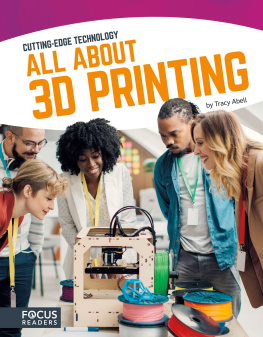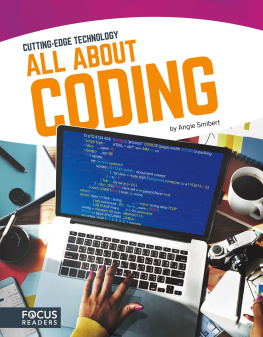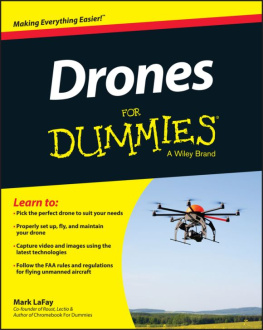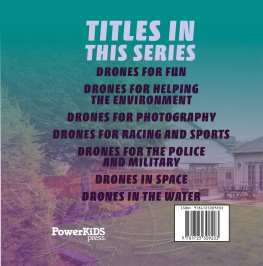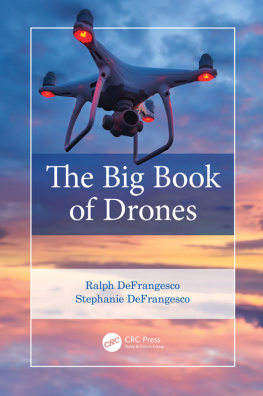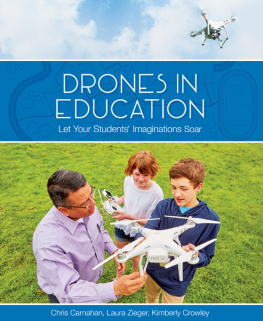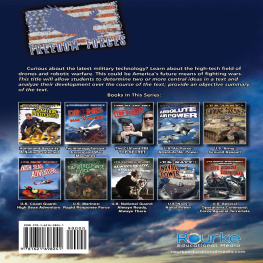
DRONES
CUTTING-EDGE TECHNOLOGY
by Tracy Abell
ALL ABOUT

ABOUT THE AUTHOR
Tracy Abell lives in the Rocky Mountain foothills where she enjoys running on the trails. She
often sees coyotes, foxes, rabbits, magpies, and meadowlarks out there in the open space.
www.northstareditions.com
Copyright 2017 by North Star Editions, Lake Elmo, MN 55042. All rights reserved. No
part of this book may be reproduced or utilized in any form or by any means without written
permission from the publisher.
Produced for North Star Editions by Red Line Editorial.
Photographs : Alexey Yuzhakov/Shutterstock Images, cover, 1; Lucky Business/
Shutterstock Images, 45; Lt. Col. Leslie Pratt/US Air Force, 6; Dmitry Kalinovsky/
Shutterstock Images, 9; Maria Dryfhout/Shutterstock Images, 1011; seregalsv/Shutterstock
Images, 13; sezer66/iStockphoto, 15; Julia Tim/Shutterstock Images, 1617; Kletr/
Shutterstock Images, 1819; Kike Calvo/AP Images, 21; leungchopan/Shutterstock Images,
2223; Ververidis Vasilis/Shutterstock Images, 25; gualtiero boffi/Shutterstock Images,
2627; Fotos593/Shutterstock Images, 29
Content Consultant: Dr. John B. Bridewell, Professor of Aviation, University of North Dakota
ISBN
978-1-63517-012-2 (hardcover)
978-1-63517-068-9 (paperback)
978-1-63517-173-0 (ebook pdf)
978-1-63517-123-5 (hosted ebook)
Library of Congress Control Number: 2016949757
Printed in the United States of America
Mankato, MN
November, 2016
978-1-68444-291-1 (e-book)
Synched Read-Along Version by:
Triangle Interactive LLC
PO Box 573
Prior Lake, MN 55372

TABLE OF CONTENTS
CHAPTER 1
What Is a Drone?
CHAPTER 2
How Drones Work
HOW IT WORKS
Roll, Pitch, Yaw, and Throttle
CHAPTER 3
Drones in Action
CHAPTER 4
Potential Problems
CHAPTER 5
The Future of Drones
Focus on Drones 30
Glossary 31
To Learn More 32
Index 32

CHAPTER
WHAT IS A DRONE?
Y
ou look down at a snow-covered
mountain. Like an eagle, you swoop
close to a lone snowboarder going down
the slope. White powder sprays behind
the board. Trees pass by in a green blur.
You see it all: the snowboarder, the
sparkling slope, and the blue sky.
Drones enable users to record events and views
from exciting places and angles.

A US military drone flies a combat mission in
Afghanistan.
How is this possible? You are
controlling a drone that flies just above
the snowboarder. The snowboarder ends
her run in a powdery swoosh. The drone
flies back up the mountain to you.

A drone is an aircraft that can fly
without a human pilot on board.
Drones come in a variety of sizes and
prices. The US Air Force has many
large drones. They weigh thousands
of pounds and can fly more than
50,000 feet (15,240 m) above the ground.
RADIOPLANE OQ-2A
The Radioplane OQ-2A was a remote-controlled
target drone flown in 1943. It had to be launched
by a catapult. The OQ-2A had a wingspan of feet
(4.0 m) and weighed pounds (49 kg). The OQ-2A
could fly 8,000 feet (2,400 m) high. A Radioplane
OQ-2A is on display at the National Museum of the
United States Air Force in Dayton, Ohio.
These drones cost millions of dollars.
Some microdrones may weigh only
ounce (28 g) and cost less than
$100. Larger drones are typically built
by manufacturers. But there are also
do-it-yourself kits for building your
own drone.
It is impossible to say when the first
drone was invented. Some believe it
was in 1849. In that year, Austria used
balloons filled with bombs during a war.
Others say the first drone was invented in
the 1930s. That is when the United States
first sent up remote-controlled aircraft.
These devices were practice targets for
the army.

Inexpensive hobby drones are available at many stores
and online retailers.
Drones may have begun with the
military. But by the 1940s, things
changed. Remote-controlled aircraft
became a hobby for civilians. Today,
more than one million people own
hobby drones.

CHAPTER
HOW DRONES WORK
H
obby drones come in three categories.
The first is planes and gliders.
These drones look like a typical piloted
aircraft with two wings and a tail. They
can only move forward. They cannot
hover . Propellers are usually pointed
horizontally.
Multicopters are the most popular type of drone.
The second category is helicopters.
Helicopters have propellers or rotors
pointed vertically. These drones can move
forward, backward, and side to side. They
can also hover.
The third category is multicopters.
These drones typically have three to eight
rotors. Multicopters move like helicopters.
All drones must be able to get up
in the air. Lift is what makes objects
that are heavier than air stay aloft . Lift
happens when air is moved across wings
and rotors. The upper surface is curved,
and this makes the air move faster.
Faster-moving air results in low pressure,


